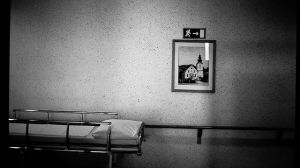The study found that “the overall quality of communication between clinicians and patients with advanced illness is poor, particularly with respect to discussing prognosis, dealing with emotional and spiritual concerns, and finding the right balance between hoping for the best and preparing for the worst.”
What’s more, our “current financial incentives and a lack of more appropriate alternatives drive a reliance on the riskiest and most costly care settings.” As a result of these and other factors identified in the report, “Patients often experience multiple transitions near the end of life, and they suffer the consequences of the resultant discontinuities in care.”
In The New York Times, Nina Bernstein shares a heartbreaking story of how all of this plays out in the real world that is a must-read for anyone with an elderly or aging parent.
Bernstein writes:
Joseph Andrey was 5 years old in 1927 when his impoverished mother sold him to the manager of a popular vaudeville act. He was 91 last year when he told the story again, propped in a wheelchair in the rehabilitation unit of a nursing home where it seemed as though age and infirmity had put a different kind of price on his head.
Craning his neck, he sought the eyes of his daughter, Maureen Stefanides, who had promised to get him out of this place. “I want to go home, to my books and my music,” he said, his voice whispery but intense.
He was still her handsome father, the song-and-dance man of her childhood, with a full head of wavy hair and blue eyes that lit up when he talked. But he was gaunt now, warped like a weathered plank, perhaps by late effects of an old stroke, certainly by muscle atrophy and bad circulation in his legs.
Now she was determined to fulfill her father’s dearest wish, the wish so common among frail, elderly people: to die at home.
But it seemed as if all the forces of the health care system were against her — hospitals, nursing homes, home health agencies, insurance companies, and the shifting crosscurrents of public health care spending.
Her father had been discharged by a hospital to a nursing home like this one, supposedly for rehabilitation, so many times that even she had lost count. The stays, long or short, had only left him weaker, harder to care for at home with a shrinking allotment of help from aides and more prone to the infections that sent him back to the hospital.
This time she had fiercely opposed his being discharged to anywhere but home, a small walk-up apartment in Manhattan that her parents shared for half a century before her mother’s death. Yet over her protests and his own, he had been transferred here anyway, to Jewish Home Lifecare in Morningside Heights, a sprawling institution an hour from where she lived. Later, he would ask, “Are you sure you didn’t put me here?”
“No matter what I do, they want you in a nursing home,” Ms. Stefanides told him, promising the placement would be temporary.
“I think they’re making money off you.”
There’s a lot more to the story — read the whole piece at The New York Times.
And for much more on end-of-life issues, also check out Bill Moyers’ groundbreaking four-part series, “On Our Own Terms: Moyers on Dying.”


